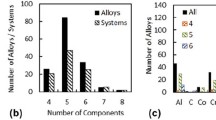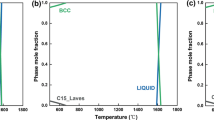Abstract
The CUORE detector, to be installed in 2010 at LNGS, is made of 988 TeO2 crystals to be cooled to 10 mK. It consists of a large cryogen-free cryostat cooled by five pulse tubes and one high-power specially designed dilution refrigerator (R. Ardito et al. in http://arxiv.org/abs/hep-ex/0501010, [2005]). The cryostat is ∼ 3 m high and has a diameter of ∼ 1.6 m. About 5 tons of lead shielding are to be cooled to below 1 K and a mass of 1.5 ton must be cooled to 10 mK.
Some tie-rods sustain the different parts of the experiment. One end of each rod is at low temperature (10 mK for the detector frame, 50 mK for the coldest radiation shield, 700 mK for the shield linked to the still) with the other end usually at room temperature. A thermalization of the rods at the temperature of the first stage of the pulse tubes will be realized. Hence the value of the thermal conductivity of the material up to room temperature is important. At the lowest temperatures, the thermal conductivity has great influence in establishing the thermal load on the dilution refrigerator. The thermal conductivity of the structural material candidates for such tie-rods is usually known down to 4.2 K. Here we present data of thermal conductivity for the Ti6Al4V alloy below its superconductive transition temperature (4.38 K). A comparison over the full temperature range of operation is also done with other materials, such as 316 stainless steel and Torlon, candidates for the realization of the tie-rods.
Similar content being viewed by others
References
R. Ardito et al., CUORE: a cryogenic underground observatory for rare events, http://arxiv.org/abs/hep-ex/0501010 (2005)
M. Reytier, F. Kircher, B. Levesy, Adv. in Cryog. Eng.: Proc. of the Int. Cryog. Mat. Conf.—ICMC. AIP Conference Proceedings, vol. 614 (2002), p. 76
E.D. Marquardt, J.P. Le, R. Radebaugh, in Cryogenic Material Properties Database, ed. by R.G. Ross Jr. Cryocoolers, vol. 11 (Springer, New York, 2002), p. 681
W.A. Bosch et al., in Proc. TEMPMEKO 2001, ed. by B. Fellmuth et al. (VDE Verlag, Berlin, 2001), p. 397
S. Schottl et al., J. Low Temp. Phys. 138, 941 (2005)
O. Umezawa, K. Ishikawa, Cryogenics 32(10), 873 (1992)
M. Barucci, E. Olivieri, E. Pasca, L. Risegari, G. Ventura, Cryogenics 45(4), 295 (2005)
G. Ventura, G. Bianchini, E. Gottardi, I. Peroni, A. Peruzzi, Cryogenics 39(5), 481 (1999)
G. Ventura, M. Barucci, E. Gottardi, I. Peroni, Cryogenics 40(7), 489 (2000)
Author information
Authors and Affiliations
Corresponding author
Rights and permissions
About this article
Cite this article
Risegari, L., Barucci, M., Lolli, L. et al. Low Temperature Thermal Conductivity of Ti6Al4V Alloy. J Low Temp Phys 151, 645–649 (2008). https://doi.org/10.1007/s10909-008-9726-5
Received:
Accepted:
Published:
Issue Date:
DOI: https://doi.org/10.1007/s10909-008-9726-5




